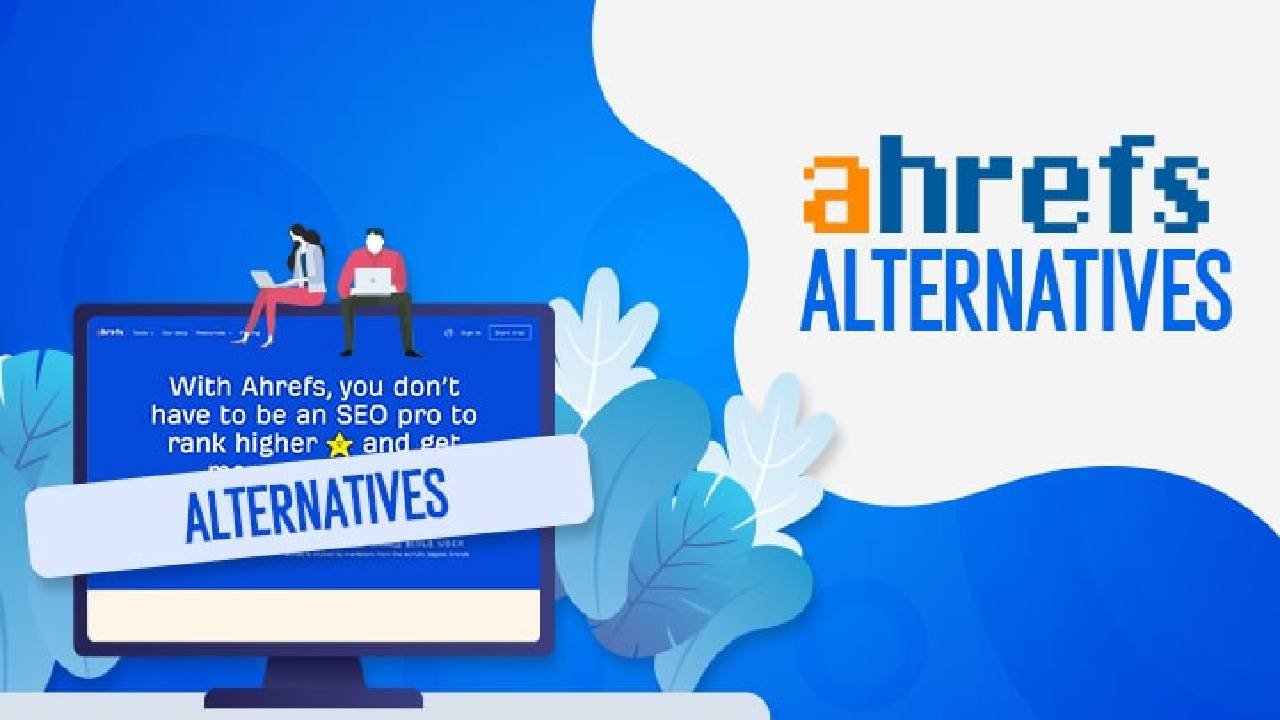Updated: June 2023
Well-founded keyword research is an absolute must in search engine optimization. She decides on the success or failure of your content on Google. With it, you lay the foundation stone for many different areas in SEO.
Without keyword research, it is very difficult to win visibility on Google and climb the tip of the Google mountain. In addition, you do not enjoy learning more about the search behavior of your target group.
What does that bring you?
More traffic on your website and with the right terms, more sales!
In this guide, you will learn everything from A to Z via the right keyword research. I’ll show you how you can easily find the right keywords for your content. In addition, I will tell you my tooltips and there is an editorial plan for free for you as a download.
Ready? Then have fun reading!
- What is a keyword?
- The most important keyword properties
- The different keyword types
- What exactly is keyword research?
- Understand the search intent behind the keywords
- With these tools, you rock your research & keyword analysis
- How do I find the best keywords for myself?
- Free research with “Suggest functions”
- Step-by-step instructions for a well-founded keyword research
- Your editorial plan template
- Conclusion
What is a keyword?
If you can answer this question without hesitation, then jump straight to the next chapter.
If you are not 100% sure, stay tuned and read on.
We describe terms or concept combinations (with several words) that people enter in Google as keywords. So a keyword is a search term – or several search terms.

We can make 3 different distinctions for the search terms:
- Short-Tail or “Head” → High search volume, very general, and often contested
- Mid-tail → medium search volume, somewhat more specific and closer to the conversion
- Long-Tail → Low search volume, very specific, and close to the conversion
An example of a long-tail keyword:
“Buy cheap washing machine top loader” (search volume approx. 100 per month)
That would be a long-tail keyword that consists of several terms. This is not entirely unimportant for research. Most of the time it is the long tails that are worthwhile because it is often easier to rank for them.
These keywords are less sought after and offer you a good point of attack for your content and your site. Of course, this does not mean that you should not tackle any terms with higher search volumes. Only the “entry” is significantly lighter in the long-tail area.
There is also a distinction between main and side keywords. This is important for the later selection of your keywords.
We describe the keyword as the main keyword, on which your topic is mainly based. This is the term that defines your content. For example, it is integrated with the H1, in the first 100 words, and the metadata.
The side keywords are mostly variations or synonyms of your main keyword. They complement it and make the content round. Often the terms such as “comparison”, “guide” or “test ”.
The most important keyword properties
There are certain properties that a keyword can have:
- Search volume – how often is the keyword searched?
- Word number – How many words does the keyword come together?
- Search intention – what intentions do the seekers have?
- CPC (cost-per-click) – how much does a click on the ads cost?
- Clicks per search – how often will the search request click on a result?
- Do SERP features – What functions do the SERPs offer? (Google Ads, Product listings, Knowledge Box, …)
- Competition – how competitive is the keyword?
Search Intention
Since I go into the search intention – or “Search Intent” – in detail below, only a few introductory words are here.
In addition to the search volume, the search is primarily a very important property in the context of keyword research. If you meet the search intention with your page (or your content) optimally, you will have good chances of ranking in the long term.
You ensure the right content in the right context and offer the seekers what they want to find.
Below is more about search intention.
SERP Features
The so-called SERP features are very important for understanding the keyword and the chances of success. If there are a lot of SERP features, the distraction from the organic hits is enormous.
The more elements appear in the search, the lower the click rate.
According to Sistrix, the average CTR in Google is around 28.5%. With many features such as Google Ads, the CTR can drop to a whopping and write about 10-13%. For 1st place, mind you!
The problem is illustrated in the following graphic. The whey protein serves as an example. You recognize the Google Ads, Knowledge Box, and other SERP features in the red frame. These take up a lot of space in the visible area. And that is the desktop view-the organic hits on the cell phone are even further below.
Only in the green area are our organic hits on the desktop. Unbelievable?
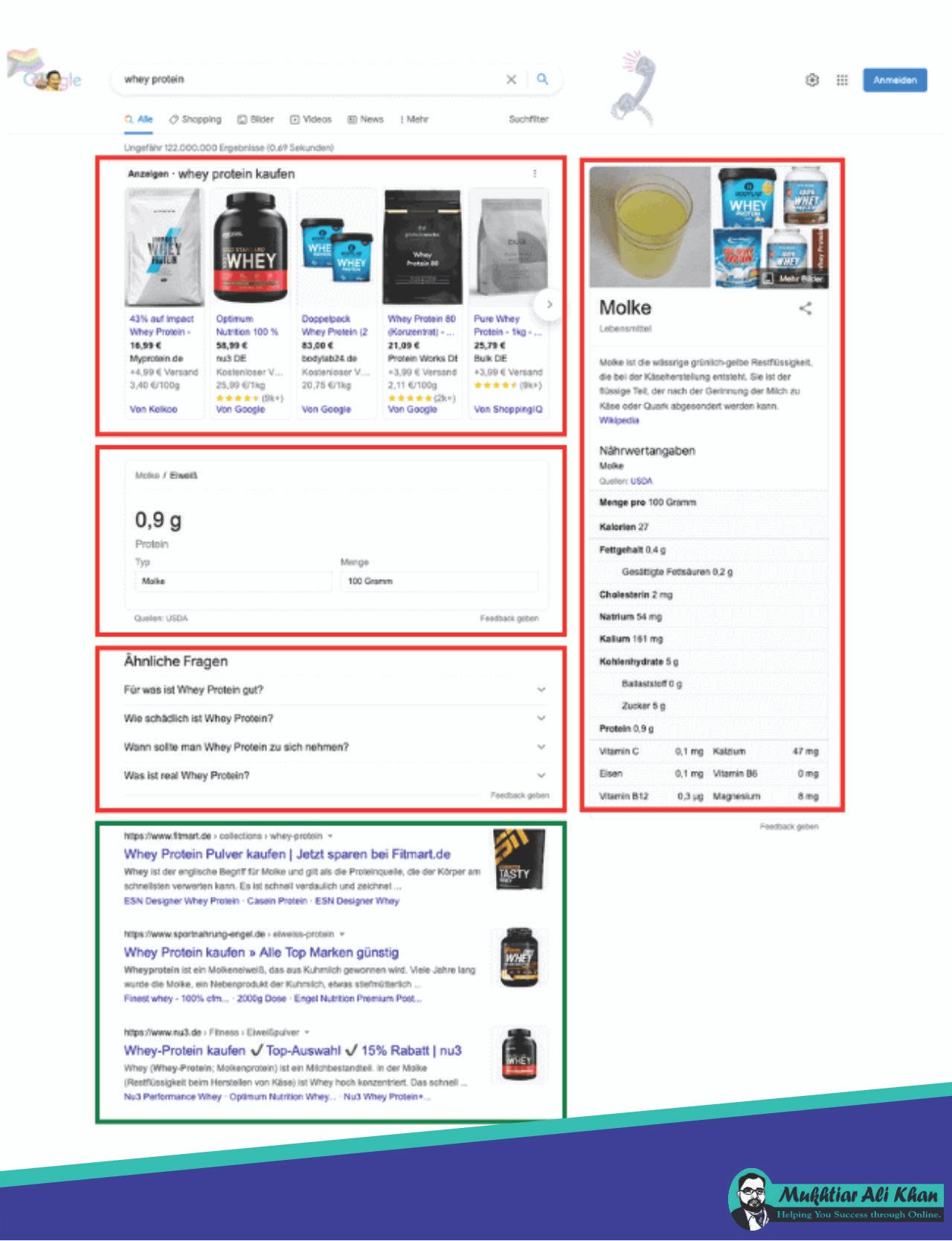
You see: Even if a keyword sounds suitable at first glance, you should look at more than just the search volume. Another very important aspect is the competition. We are now coming.
Read Also: Master the Art of Crafting Powerful Eye-catching Headlines for Your Blog Posts
Contest
The competition is also very important to me because it gives me how easy or difficult it is to rank. In other words, if the competition is high, you have it all the more difficult to rank. The lower the competition, the easier you will make it up.
In most tools, there is a metric – “Keyword difficulty”. I would look at this key figure. If you find that this is over 50, I would put the keyword (or the topic) back in the back.
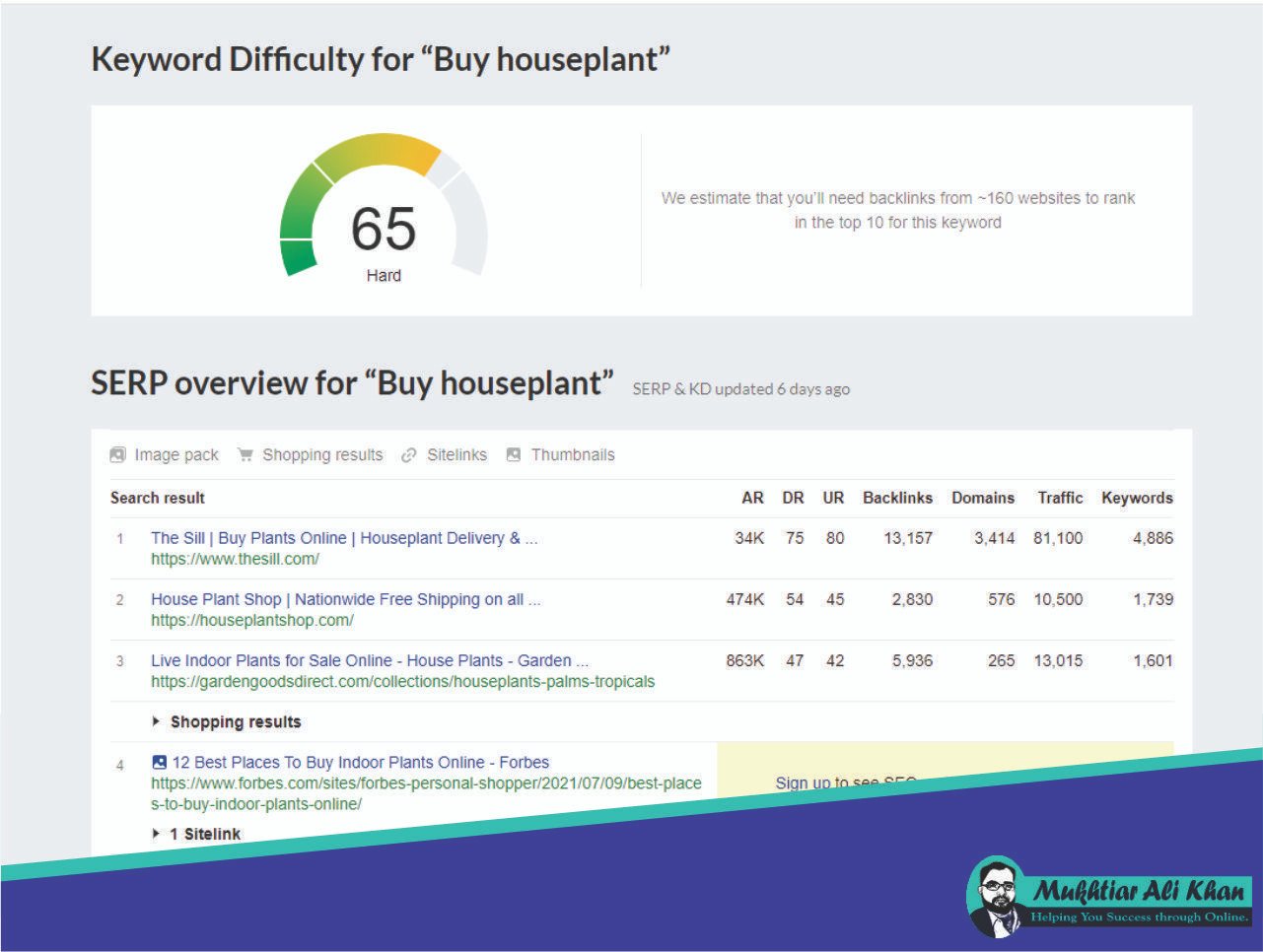
The different keyword types
In addition to the properties, there are also different keyword types. We essentially distinguish the following types:
- Informationally Queries = I’m looking for information for my problem
- Navigational Queries = I would like to go to a specific website
- Transactional Queries = I want to buy something
- Local Queries = I’m looking for a regional provider or service provider
- Brand Queries = I would like to go directly to a specific brand/company
For the success of your page, you must take these types into account in your analysis. Because if your content does not fit the keyword type, it will be very difficult for you to rank (or to rank at all).
An example:
In your shop, you sell feed and accessories for the dog. A category is about wet food. If people are looking for “dry food or wet food” you probably don’t get far with a shop category because people are more likely to look for a guide.
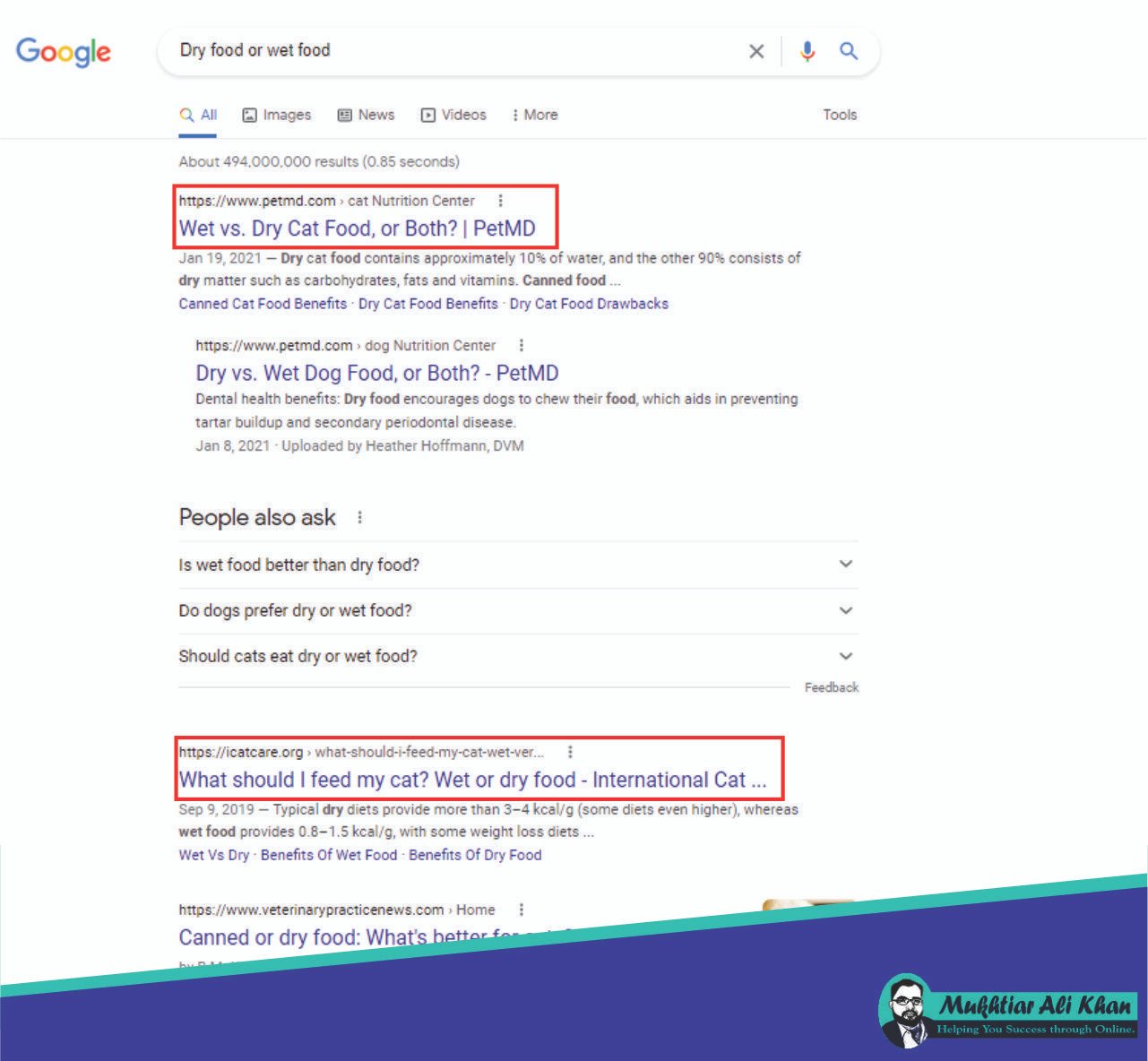
In short: it is an informational keyword and therefore the content must be information-oriented (e.g. guide or instruction) and not transaction-oriented.
What exactly is keyword research?
Regardless of whether you run a blog, have a company website, or lead an online shop: the right content is the be-all and end of the above.
And what helps you find the right content and then create it?
The keyword research!
Well, you probably thought that – I know, not surprisingly.
For me, keyword research forms the absolute basis of the (onpage) SEO. Without them, you will not find the terms you can serve with your products, services, or advice.
A clear definition for me is the following:
“The keyword research is the process in which you will find out the terms that your target group will enter in Google search to find your content, products or services.”
But it’s not just about mere “research”. For me, it is rather a well-founded analysis of the search behavior of your target group. I value a better understanding of how and where is searched for.
I not only analyze the search volume, but I also think about what the target group promises and what it wants to find.
Research is too superficial for me. Therefore, I prefer to speak of a “keyword analysis” in this context. For me it is about the following aspects:
- Find keywords including search volume
- Understand the target group
- Create a suitable keyword set
- Meet the search intention perfectly
- Create good content based on the keyword set
And now?
Now we have to understand the search intention and involve them properly. Understanding and the right interpretation are crucial for a good ranking.
Understand the search intent behind the keywords
The search intention is simply put on “the intention that a searcher follows with the (Google) search”. In other words, it is the intention with which someone starts a search via Google, for example.
However, the topic is much more complex than it sounds at first. Therefore, I only want to give you a smaller introduction to the topic.
The Search Intent is not entirely new if we are honest. In a 2007 study, the search intent of informational and transactional search queries is analyzed. Strictly speaking, the study relies on another from 2004. However, the search was really crowded around the introduction of the Google Hummingbird updates and ultimately Rankbrain.
Since then, Google algorithms have been able to understand new searches even better. Therefore, the search intent behind the search queries has become and becomes increasingly important. It is no longer just about the “mere” selection of the keywords, but rather about a better understanding of what is behind the search query.
If you understand your target and you want to find information, you can do your content appropriately – you deliver what people want to read. Well, I should say: You deliver what Google thinks that people want to read. The following questions are relevant for understanding:
- What is the goal behind the search query?
- Which aspects of the topic are interesting to the searchers?
- How do you feel about the search?
- What worries & problems do you have?
The questions are not as banal as they sound at first, but they help you create really good content. In the long term, it will bring you up to the top.
Let’s briefly come to the search intention types
In general, there are 4 different types (similar to the keyword species):
- Information (search for information)
- Navigational (find a specific website)
- Transactional (buy something)
- Commercial Investigation (find a product, but still required information)
However, I find the division of Google a little more helpful because it pragmatically illustrates the intention. According to its Quality Rater Guidelines, Google divides them as follows:
- Know – I want to know something (cleaning iPhone, …)
- Do – I want to do something (Newsletter, buy a product, …)
- Website – I want to go to a specific website
- Visit-in person – I want z. B. in a shop (restaurant, hairdresser, …)
Now you can divide these 4 species even further. Because we z. B. wants to know something does not always need 5,000 words. Maybe 1-2 sentences are enough for him to solve his problem. Such search queries have the intent “know simple”.
This could even be answered in a featured snippet:
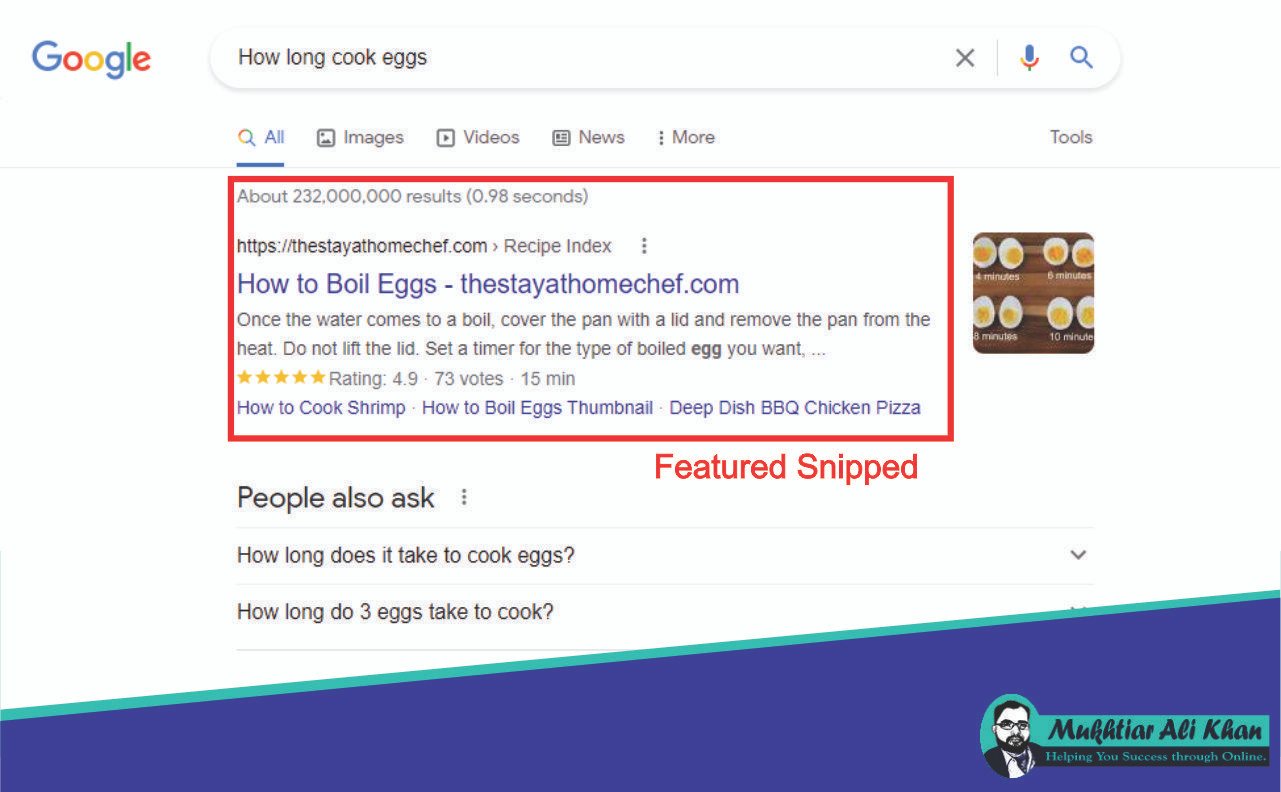
Following on, someone can also find out more about a product. This often amounts to a product test or comparison. We then speak of “Know Commercial”. This is also known as a “commercial investment”. A certain type of information is desired here.
We also differentiate between the “do” between normal and commercial do. Normally: someone wants to subscribe to a newsletter, ie “Zalando newsletter”. Or test access to a tool. DO Commercial, on the other hand, would be the purchase of a product: “Buy houseplant”.
Here again, is the overview:
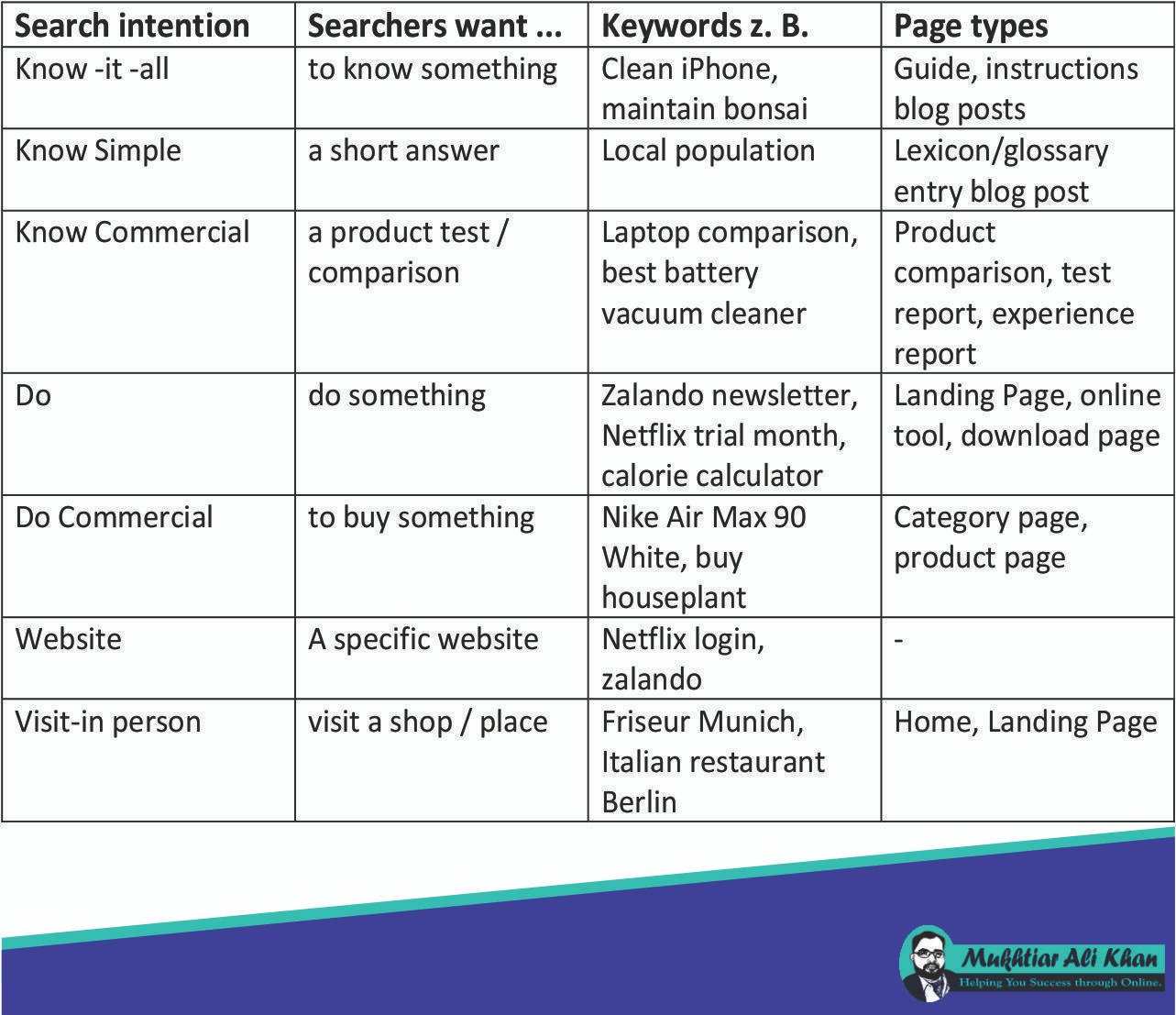
And how can I find out the Search Intent now?
As so often, the answer is in the SERPS. Because they give you (almost) all the information you need. Take a look at at least the top 3 – in the best case, the TOP 5. Using the hits you can see exactly what type of content is relevant.
For example, if you want to buy something, you will probably not find blog posts in the SERPS. In this case, online shops rank with category or product pages. Possible keywords are e.g. B. “Nike Airmax 90” or “box spring bed 200x200cm”.
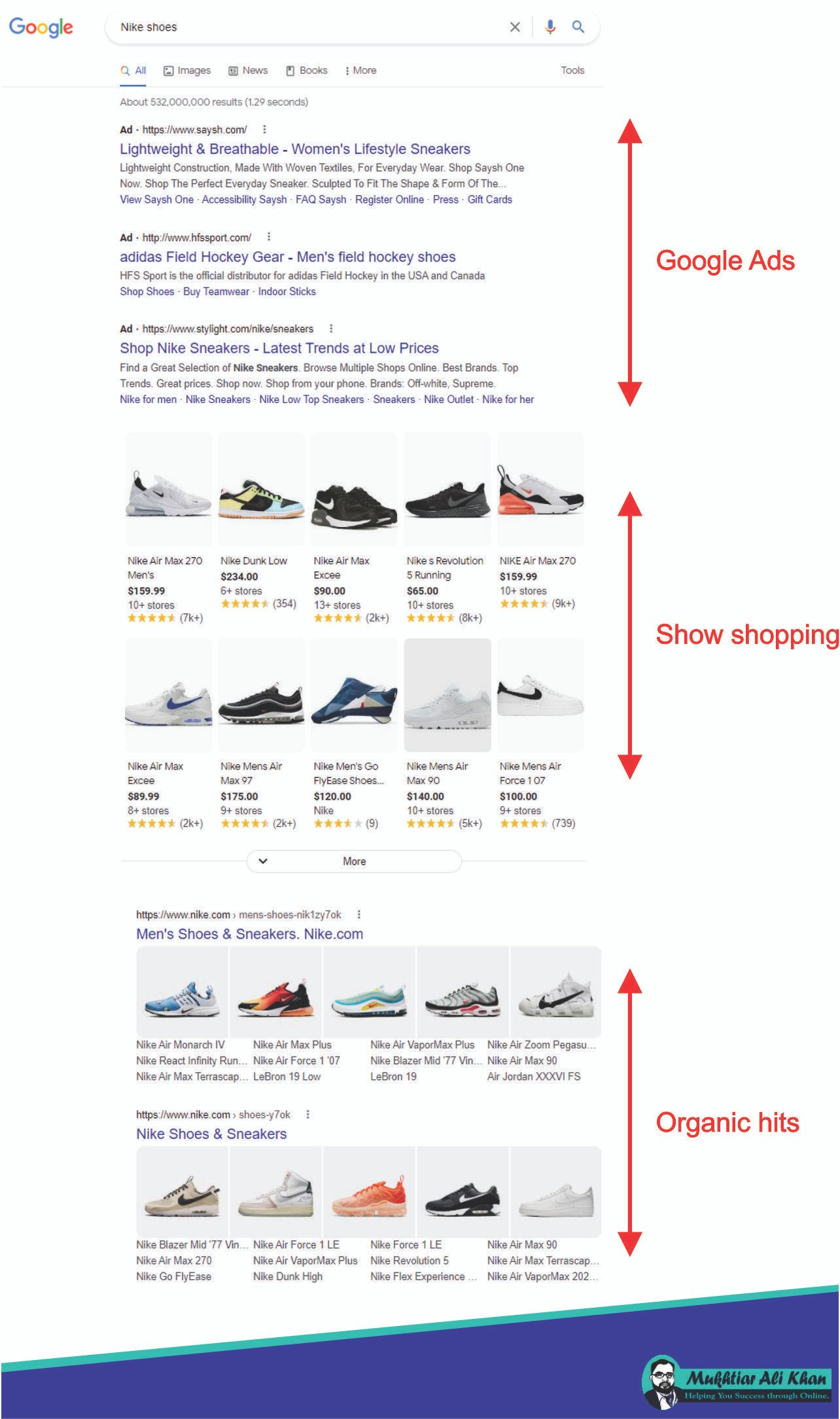
In addition to the search hits themselves, you can also conclude the search intention by putting the results pages. Transactional search queries are about a purchase. Accordingly, you will see, among other things, shopping ads and normal Google Ads.
The better you understand the real goal behind the search, the better content you can write. This leads to better rankings in the long term because you satisfy both Google and your target group.
With these tools, you rock your research & keyword analysis
Before we get into the keyword research properly, I would like to give you a few more tools. They are my honest recommendations because I work regularly with the tools myself. So I can recommend it to you with a clear conscience.
There are generally 2 tools and a free way for research:
- Keyword tools in the classic sense
- “Suggest tools” for finding ideas & enrichment
With the classic tools, I currently use Ahrefs (my darling) and the KW finder* (best price-performance) of Mangools. Both tools are now SEO suites. This means that they cover more than just pure keyword research. The KWFinder is an inexpensive alternative with a good database and a great range of functions. You also have a very tidy dashboard:
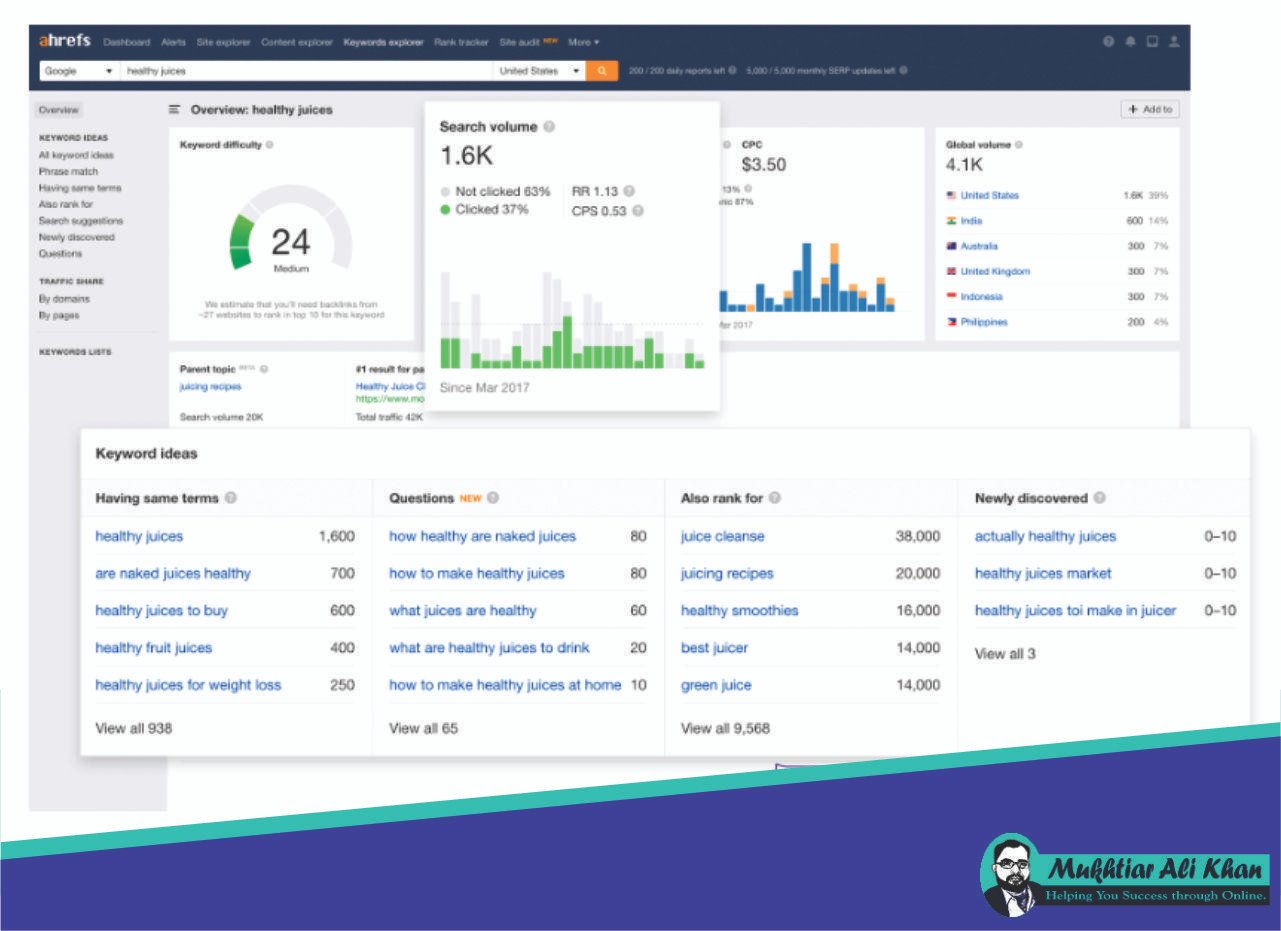
Other good keyword tracking tools are for me:
- Semrush
- Sistrix
- Surferseo & Keyword Surfer
- (somewhat cut off)
Most tools are more than just suitable for keyword research. Among other things, they also cover SEO Audits, Rank Tracking, and Backlink analyses. The more expensive the tool, the higher the quality of the database and the range of functions.
There are also the so-called “Suggest tools”.
The Suggest tools can provide you with questions about topics and identify so-called sub-topics. A popular and well-known tool is “AnswerThePublic“. And the best part is, it’s free! This gives you which questions are connected to the search term/topic.
Below we deal with the Suggest functions of the search engines.
Master the art of keyword research with this comprehensive guide. Learn how to identify high-performing keywords, analyze competition, and optimize your content for search engines. These essential tools for writers will take your SEO game to the next level.
How do I find the best keywords for myself?
I think there is no way for good keyword research. I don’t want to prescribe 1: 1 to you on how to proceed. Rather, I would like to roughly explain how you can tackle the keyword research to find your workflow.
Seed keywords as the basis of your research
Most of the time, the process starts with considering which search terms would enter your target group in Google to find yourself and your products/services.
That means brainstorming the so-called “seed keywords”.
Take a few minutes for brainstorming. It provides you with the first ideas for analysis with any SEO tool. My tip: Write down everything that comes to mind at first. It is not about excluding certain terms from the outset.
Seed keywords are mostly more general terms that describe you or your products. For example, if you have an online shop for plants, that’s:
- Houseplants
- Balcony plants
- Garden plants
- Stew
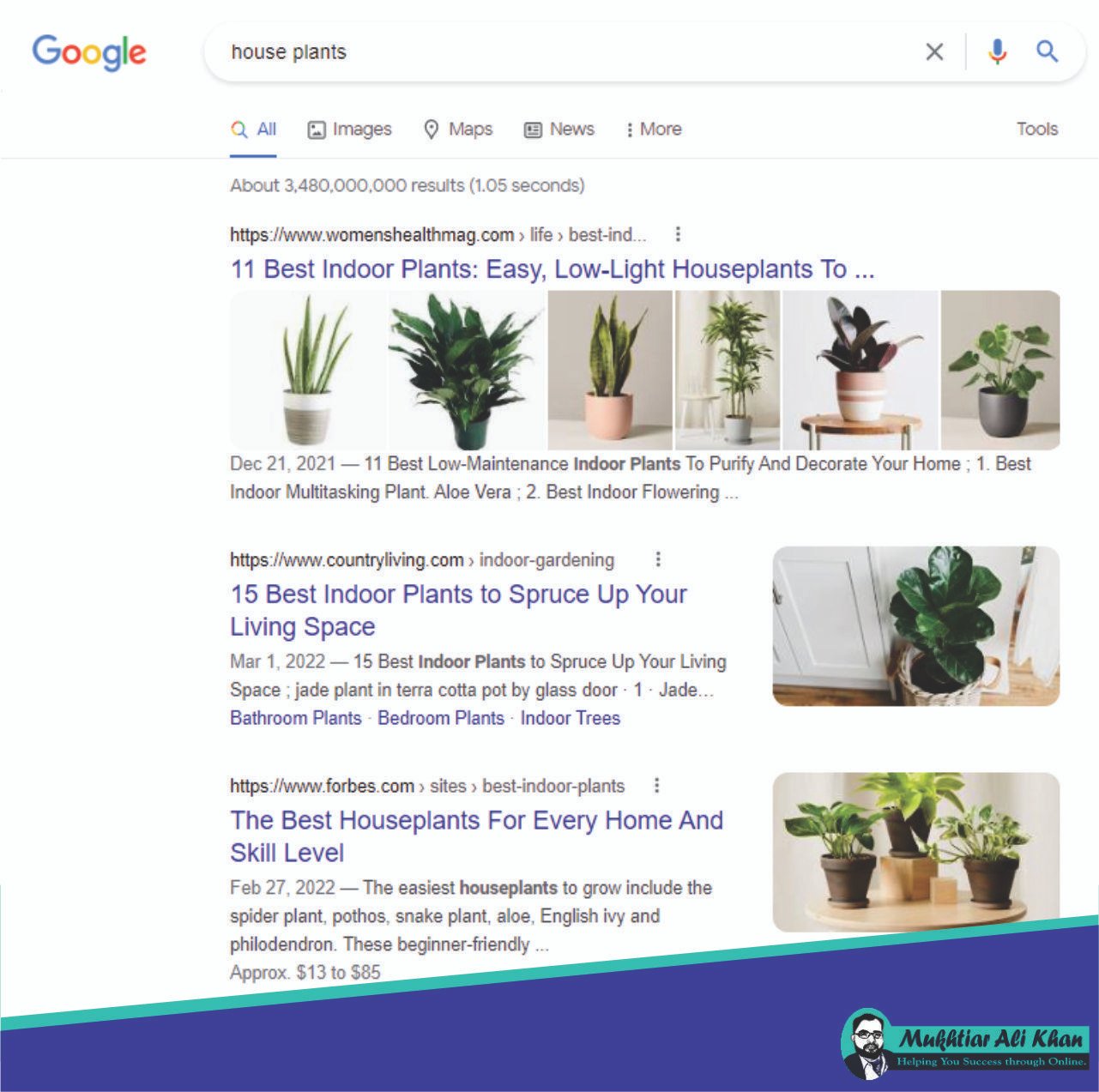
And again: write down everything you can think of!
You then use this list to gradually find the best keywords for your website. This means that you refine your list until you finally get to your final selection.
Look at your competition
This is honestly not an “insider tip” in terms of keyword research, but the best way to find relevant search terms. If you know for which terms your competition runs, you can attack there.
Of course, you have to know your competitors. If you don’t know that, you should identify your competitors using the seed keywords.
If you know your competition (on Google), take a look at your current rankings in Ahrefs or Semrush. You can see which search terms you optimize and how successful the domain and individual URLs are. If you look at an entire domain, it looks like this in Ahrefs:
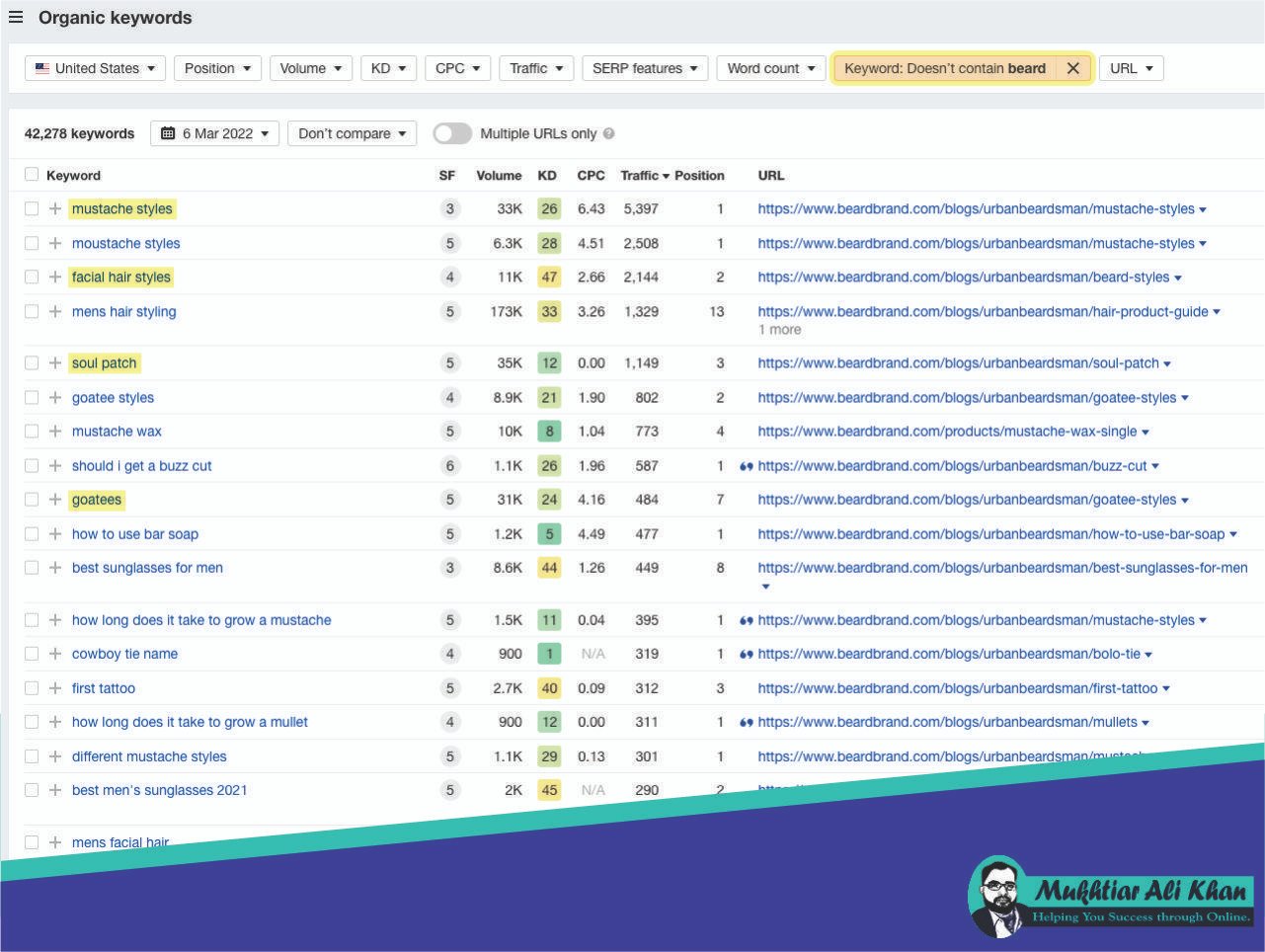
What interests us: the top rankings of the domains based on the search volume. So means: We look at which keywords potentially deliver the most traffic and also write down these keywords on our list.
If you specifically operate keyword research for one side, you should analyze individual URLs. This gives you a good impression of which rankings are possible for a single page. You will be surprised at how many keywords you can tend with one side!
You notice: that your competitors usually offer a lot of fabric for potential keywords. You just have to take the time for analysis.
Find more keywords for your KW set
After you have already checked your competition with a keyword tool of your choice, we are now coming to other terms. The aim is to complete your list and to find the best keywords for your (e) subject area (e).
To do this, enter the seed keywords in a KW tool of your choice and see which further suggestions the tool spits out. You must try to collect as much as possible. You will thin out your list in a later step.
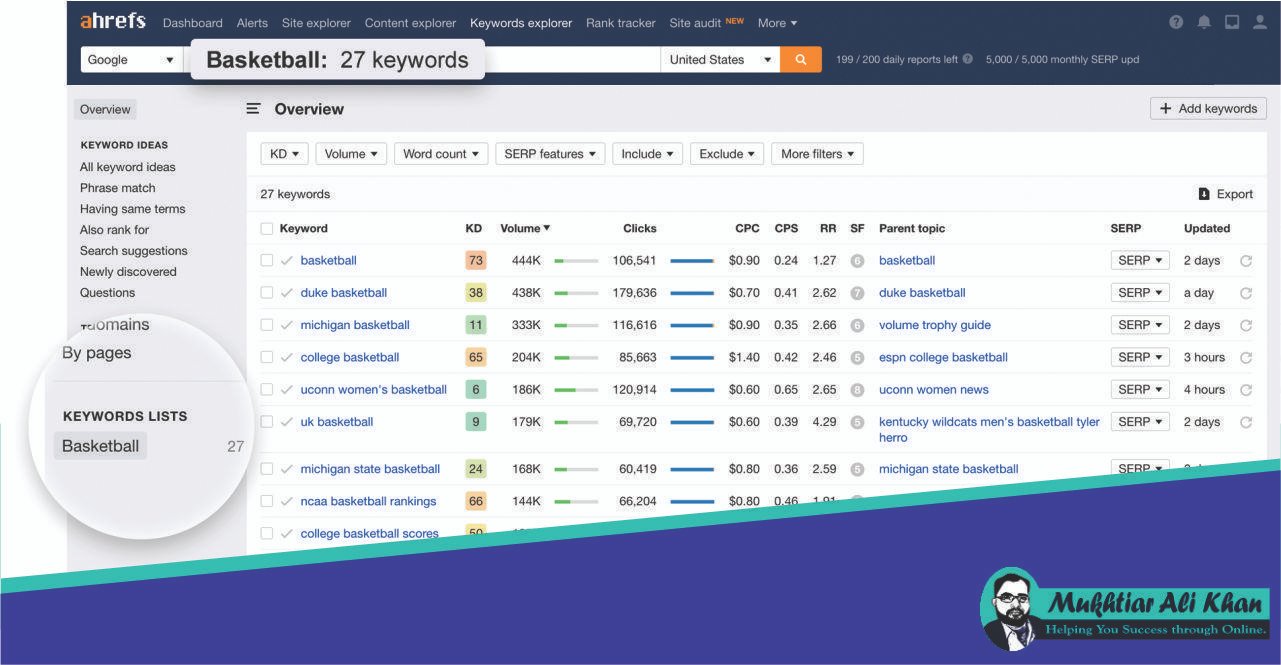
The more keywords you have in your list, the better. We want to have a good data basis for the later refinement. My tool recommendation: the KW Finder* from Mangools. It offers a useful function for export. In addition, you can first create a list in which you can collect your terms before exporting them.
If you can, use the export function and import the data via CSV into your Excel / Google Sheets.
Your keyword list should contain all suitable keywords so that you can create your content as comprehensively as possible.
What if you don’t feel like spending money on a tool? Well, there are still free options – but I would not recommend that if you want to seriously optimize 😉
Free research with “Suggest functions”
I am honest: it makes no sense for me to do research without paid tools. However, I also do this as a supplement. I look “live” in the Google search and may write me down search terms that are not yet included in my list.
You can z. B. make about “Google Suggest”. For this, you enter your term in the Google search field. Now a window opens that shows you what else people enter. IMPORTANT: I still don’t press “Enter” – otherwise the window will close and you end up directly in the SERPs.
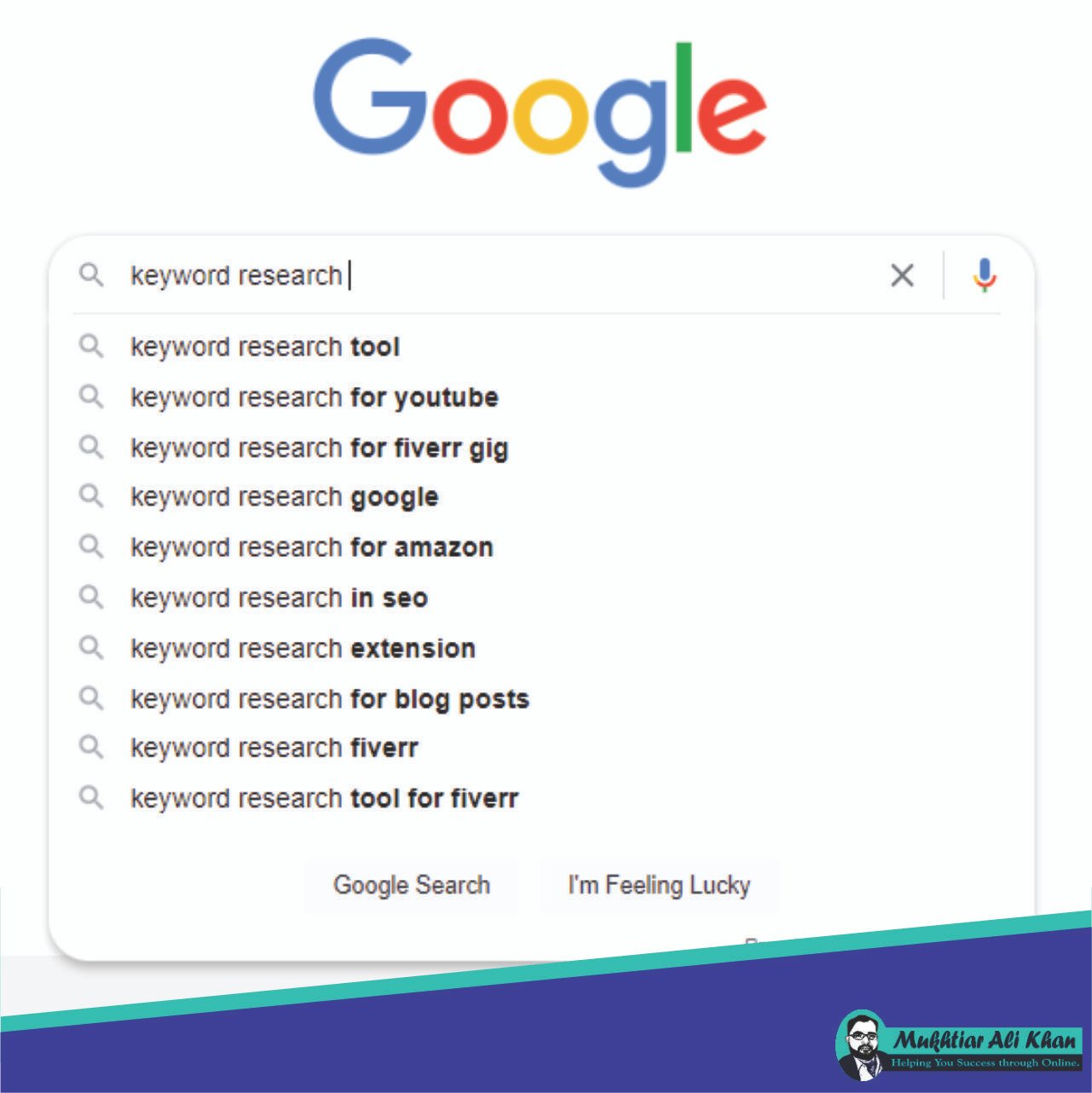
As a result, you may be able to add decisive terms to your content. Why crucial? Google believes that these terms are closely connected to your entered term. Therefore, you should take them into account.
The same applies to “related search queries” directly in the SERPS:
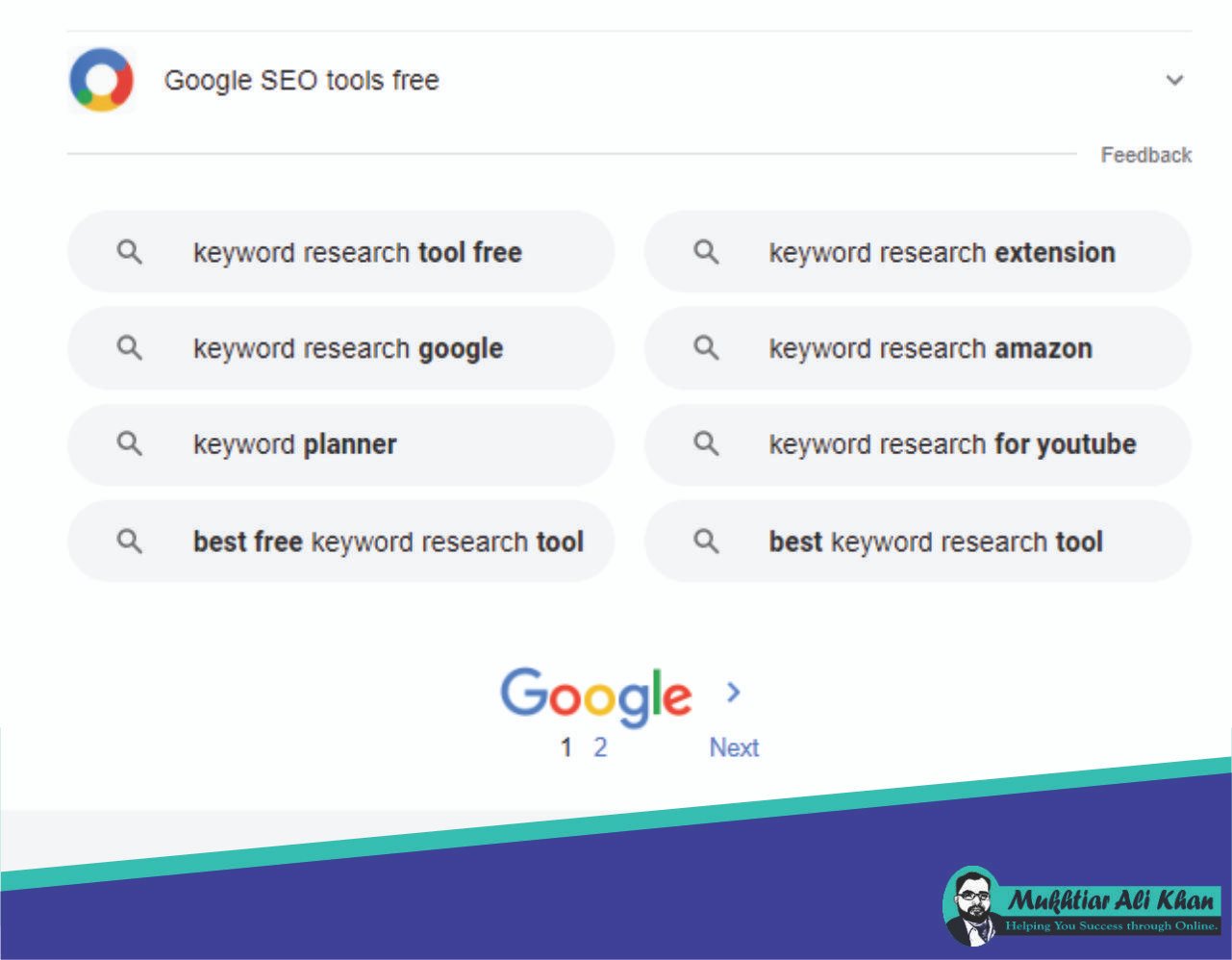
Good insights directly from the search engine itself. It is not better!
Or you use z. B. the Amazon search is a small source of inspiration for your research. Here you can find really good terms. The Amazon algorithms also attach great importance to suitable terms.
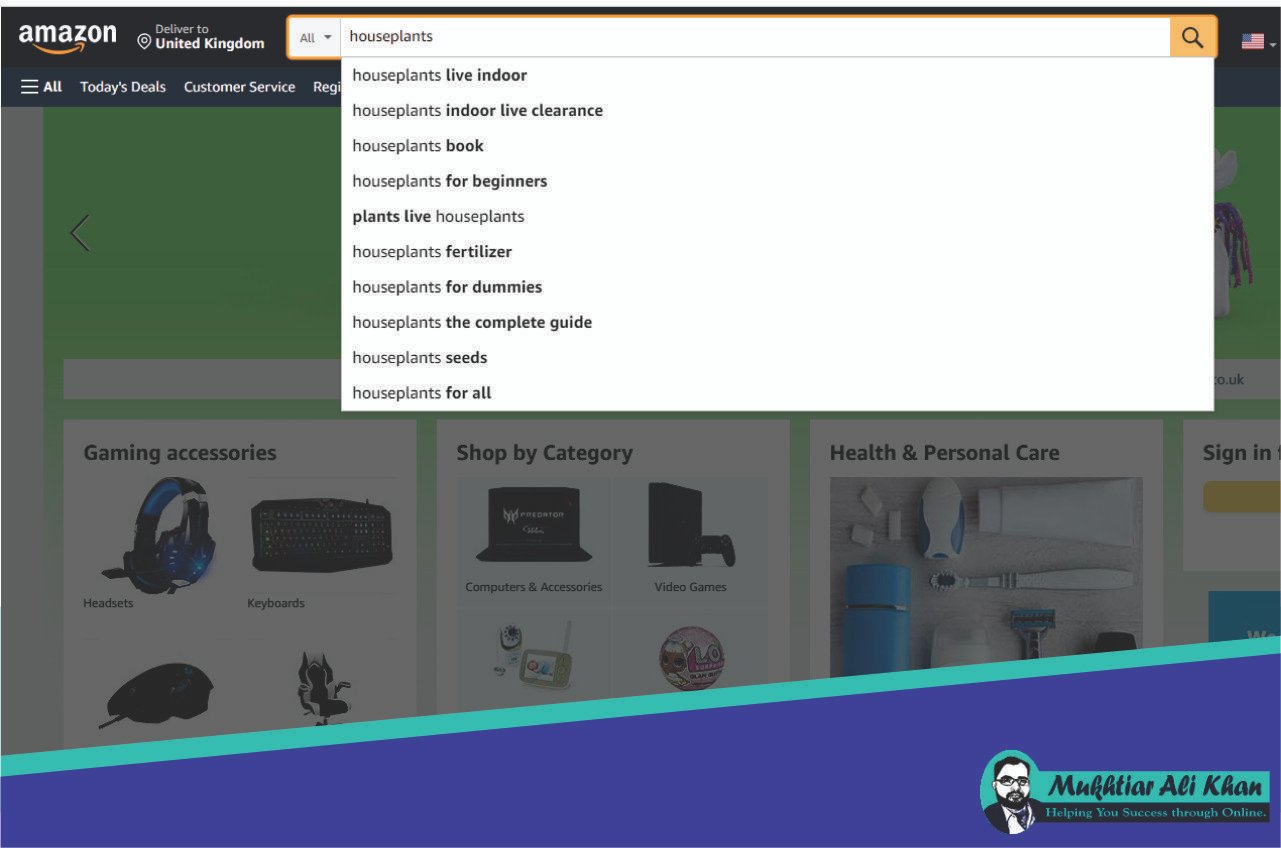
You see: The “free” possibilities are not bad, but in my opinion, they are not sufficient. In any case, I use it as a good addition or as an initial source of inspiration.
Step-by-step instructions for a well-founded keyword research
Now we come to step-by-step instructions for keyword research. Even if I am not a fan of “blueprint”. Because as with many things in SEO you have to find your workflow.
Nevertheless, I will show you a “framework” where you can orient yourself.
Step 1: Find seed keywords
As already described above, you first have to think about the general terms of your company and your products/services. Seed keywords are very general and initially only roughly specify the direction. Think about the following:
- How do customers call your products/services?
- What do you call your products/services?
- What problems do customers have in the context of your products and services?
This gives you the first search terms for your keyword list. It is important: to write down everything you can think of. You can still thin out later.
Step 2: Check & fill out the list
This step is very important for me because you get insights from practice here. You identify relevant terms for you that already work with your competitors. Of course, you have to know your competition.
You must analyze the rankings of your competition exactly:
- Top rankings (keywords)
- Keyword variations and synonyms
- Traffic potential and search volume
- Search intention
- SERP features
Pack as many keywords as possible in your list. The better the data basis, the more comprehensive you can cover the topic with your content afterward.
After analyzing your competition, try to continue filling your list. Enter the keywords in your tool and start looking for further terms.
It is a little like dedicated work. You are looking for other suitable keywords that have to do with your topic. Important: Always check whether you are still moving on your topic.
It means: fill the list!
Pro Tip: Analyze whether different SERPS are displayed for keywords. If the same pages rose for different keywords, you only need to create one page. In other words, you cover these keywords with one side. One also speaks of the so-called “SERP Overlap Score”. This value describes the similarity of the SERPs for various keywords.
With this, the question can usually be answered: “Do I need 2 pages for my 2 keywords?”.
Step 3: thin out the list, group & sort
Now you have hopefully put together a very extensive list. But we are far from being at the goal.
Because: This list has to be mutually noted to throw out inappropriate terms. We only want to keep the most relevant keywords.
And yes: here the work starts. You have to sort out inappropriate terms:
- Not relevant to your services/products
- Have nothing to do with the actual topic
- Are rather not used by your target group
I always use different colors for mucking out and sorting out my lists. Green means to me that I keep these keywords for grouping in subject areas. The yellow flies out. However, I use them for later topics and therefore they did not slip into the list for free.
At the same time as the mucking out, you can summarize the terms in groups. This helps you to identify possible sub-topics. You can z. B. Buy, maintain, pour, repotted, … You won’t be able to cover these keywords with a single page (search intention, you remember?).
And that means?
Create various subject areas in which you can nest your keywords. All of this can happen in a sheet – you don’t need to create different files. In our example, possible topics would be:
- Housing plants purchase
- Houseplants care
- …
We then pack all keywords in the sub-topics that are suitable. So we cover the customer journey better and we make it clear what type of content is necessary.
Step 4: Keywords become content
Good SEOs no longer think (only) in keywords but rather in topics. I don’t want to say that you should forget keywords in yourself – would be kind of strange after such a long post, right?
I want to say that you should make it clear which topics can be covered with which keywords. Because when you start thinking about topics, you write better texts.
How so?
Quite simply: You start to write your contributions holistically and take into account every aspect. So your keywords are shaped into the content. Ideally, this content becomes comprehensive, easy to read, and serves the search intention (s) of your target group.
But this will only be something if you give up the Stupide Keyword-Denke. In your keyword research, it looks like this at the end:
The content-type results from the keywords
In the top funnel (i.e. with rather informative keywords) there are z. B.:
- Guide/instructions/guides
- Glossary entries
In the mid-funnel (closer to the decision-making)
- Purchase guide/test reports
- Landing Pages
- Case studies
In the bottom funnel (i.e. before buying or requesting)
- Product pages
- Category pages
You can read which content you need now using the SERPS. This goes hand in hand with the search intention – do you remember?
In addition, you look at the so-called “SERP features”. So the elements on the search result. The following features can be displayed:
- Google (shopping) ads
- Featured snippet
- Pictures & videos
- Knowledge panel
- and much more.
All of this gives you a good impression of the required content type. If you select this correctly and cover the search intention perfectly, you will “play” in the long term.
Step 5: Create & maintain a content plan
Keyword research also includes a content plan or editorial plan for me. Both are the same for me. With the collected terms (often for many topics) you can then make yourself a content plan.
He determines what and when you publish. Here you, for example, note what your main keyword/topic is, who is responsible for the topic, when the deadline is, and when the contribution goes online.
The content plan gives you an orientation and makes it easier for you to structure your blog or website.
Your editorial plan template
So that you can get started right away, we have created flourish templates for you that you can easily download and use. Just comment below and get that sheet and Simply add your content to 🙂
Conclusion
In conclusion, mastering the art of keyword research is essential for successful SEO in 2023. By conducting thorough content analysis and keyword analysis, you can uncover valuable insights about your target audience’s search behavior. This knowledge empowers you to identify and incorporate relevant keywords strategically throughout your content, optimizing it for search engine visibility.
Keyword research provides the foundation for your SEO efforts, helping you attract organic traffic, improve rankings, and enhance your online presence. So, don’t underestimate the power of keyword research.
Take the time to conduct content analysis, perform keyword analysis, and embark on a comprehensive keyword research journey. By doing so, you’ll unlock the ultimate instructions for driving targeted traffic and achieving SEO success in 2023. Start your keyword research today and watch your website soar to new heights in the search engine rankings.







